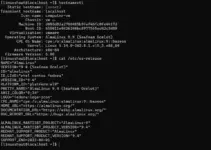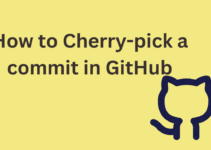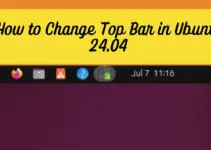Have you downloaded any AppImage and now want to create a Desktop entry? Then here is the command line tutorial to create a Desktop shortcut and Application launcher for an AppImage of some software.
AppImage desktop integration is not going to happen automatically. It is because this is a portable executable file meant to run on almost all Linux distros. Hence, using it developers don’t need to write a single software, again and again, to make it compatible with various Linux systems.
What is an AppImage?
AppImage is a package format for Linux, the goal of which is the simple, distribution-independent delivery of programs. AppImages are offered by some providers in order to be able to deliver software that is as up-to-date as possible in a timely manner, without it being distributed via the usual path of package management, snapcraft.io, etc. Such AppImages can be started by all users, which is why the distribution and use of such software are particularly easy. AppImages are often offered exclusively for 64-bit systems.
AppImage is a project that has existed since 2004, at that time still under the name “klik”. Later the name was changed to “Portable Linux Apps”, then the name was changed again to today’s “AppImage”.
Steps to create Desktop shortcut and Integration of an AppImage
Of course, even a new user easily can start an application packed in the AppImage format but the problem is, he or she has to access the local folder where the file is residing, every time to run the same.
1. Download AppImage
The first thing we should have is the AppImage of the software that we want to run because we cannot install it like any other Linux package using the package manager. For example, here we are downloading popular NextCloud client software that is available in AppImage format. You can go for any other program such as Inkscape.
2. Make the AppImage Executable
Once the file is in your system, first we have to make it executable because by default the file doesn’t have permission to execute itself.
Switch to Downloads, as whatever we download using the browser goes to this folder.
cd Downloads
To check your AppImage is there or not:
ls
Make the file executable:
chmod u+x your-filename.AppImage
Note: Change your-filename.AppImage with the Actual software file name you have downloaded.
3. Download the icon
Now, whatever AppImage you have, also download the icon of that Software you want to use in the icon or png format. You can simply search for that in Google. For example, I want to create a desktop shortcut of NextCloud client, then in the search engine -I will type: nextcloud icon png
4. Move both icon and AppImage to /opt
Although it is not necessary, still to make sure we won’t delete our downloaded files accidentally, we move them to /opt directory from Downloads.
sudo mv filename.AppImage /opt/
sudo mv your-icon-name.png /opt/
5. Create Desktop shortcut and Application Launcher
Once both AppImage of software and its icon move to /opt directory, create a desktop shortcut to easily run it from anywhere.
Hence, we have to create the shortcut manually. Here we are creating the NextCloud AppImage shortcut:
sudo dnf install nano -y
sudo nano /usr/share/applications/NextCloud.desktop
Note: Replace Nextcloud, nextcloud.AppImage and nextcloud-icon.png in the file.
Add the following lines:
[Desktop Entry] Name=Nextcloud Exec=/opt/nextcloud.AppImage Icon=/opt/nextcloud-icon.png comment=cloud Type=Application Terminal=false Encoding=UTF-8 Categories=Utility;
Save the file- Ctrl+O hit the Enter key, and then exit Ctrl+X.
Now, you can start your AppImage directly from the Applications Launcher. Moreover, if the Desktop icons are enabled on your system then you can create the shortcut on the Desktop as well. Just use:
sudo cp -r /usr/share/applications/NextCloud.desktop ~/Desktop/
After that go to the desktop, right-click on that, select properties, and in the permissions tab select Allow this file to run as a program.
Ending Notes:
In this way, we can easily integrate our program’s AppImage on any Linux system. You can see our article related to this – Install NextCloud Client on Linux
Other Articles:
How to create a desktop shortcut for any app on Linux
How to create a XAMPP server Desktop shortcut






I like to add a step. I rename the appimage to its basic name so I don’t have to update the desktop file every time I upgrade. “application.version-number.appimage” becomes “application.” I also move the old version to “application.previous” so I can revert to the former version in case the new one doesn’t work well.
I created a simple program to generate .desktop files: CreateLauncher https://www.rastersoft.com/programas/createlauncher.html
The interesting thing is that some appimage programs include internally a .desktop and the icon, and CreateLauncher detects that, so if you use it to create a .desktop launcher for an appimage, the most probable case is that you already will have the icon and everything else automagically.
Great instructions! Thought I would note that on Ubuntu 22 if you don’t have all the fields you mention the Appimage seems to run in the terminal and not have the correct icon in the application sidebar. I had the following with the missing category and encoding, and my app ran in the terminal and didn’t have the correct icon…
[Desktop Entry]
Name=Obsidian
Exec=/home/user/Obsidian-1.3.5.AppImage
Icon=/home/user/icons/obsidian.png
Type=Application
Terminal=false
But when I added the encoding and category and trailing semi it works as expected…
[Desktop Entry]
Name=Obsidian
Exec=/home/user/Obsidian-1.3.5.AppImage
Icon=/home/user/icons/obsidian.png
Type=Application
Terminal=false
Encoding=UTF-8
Category=Utility;
Great tutorial!